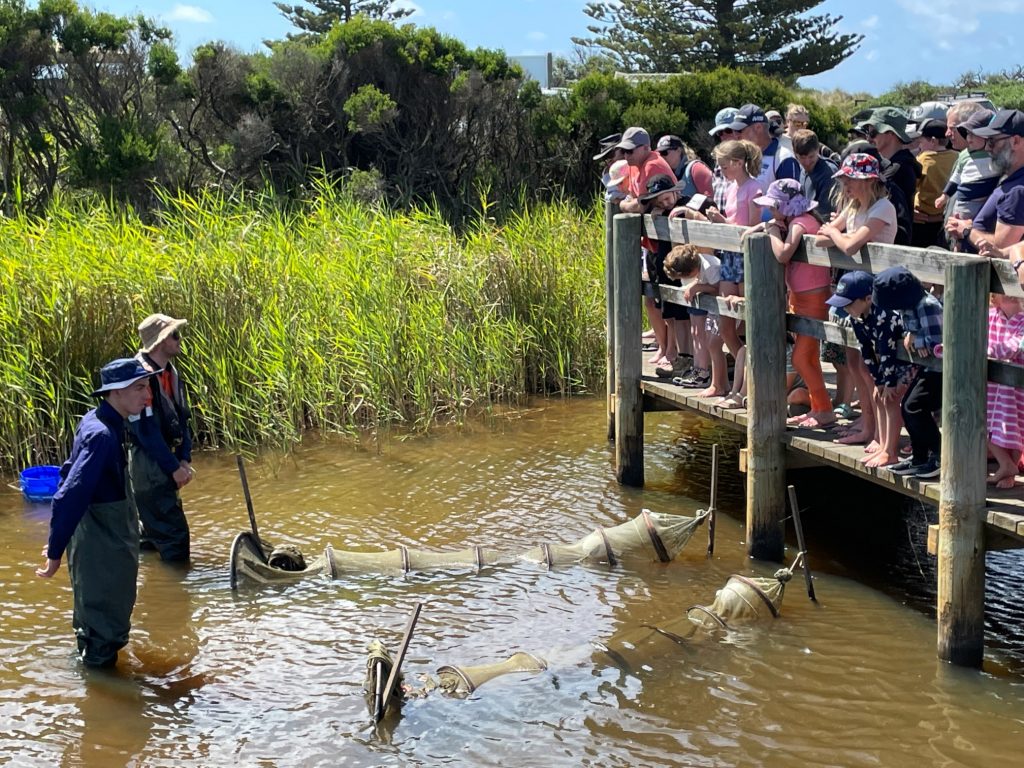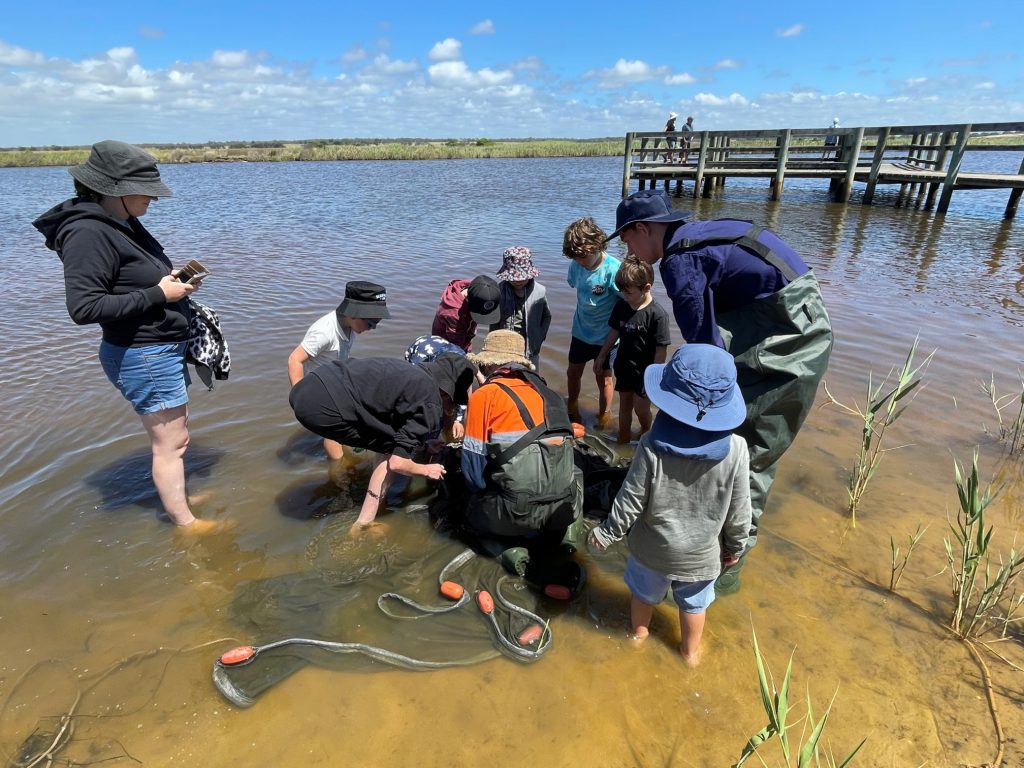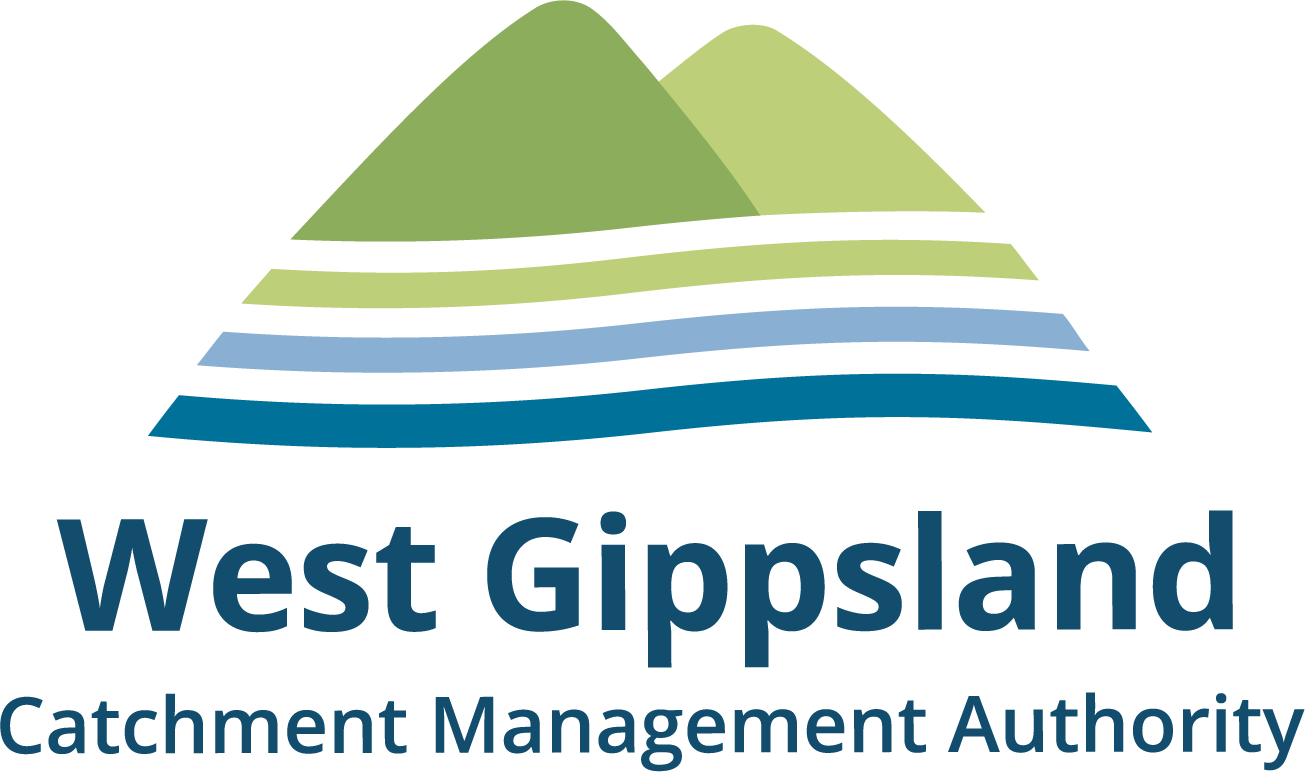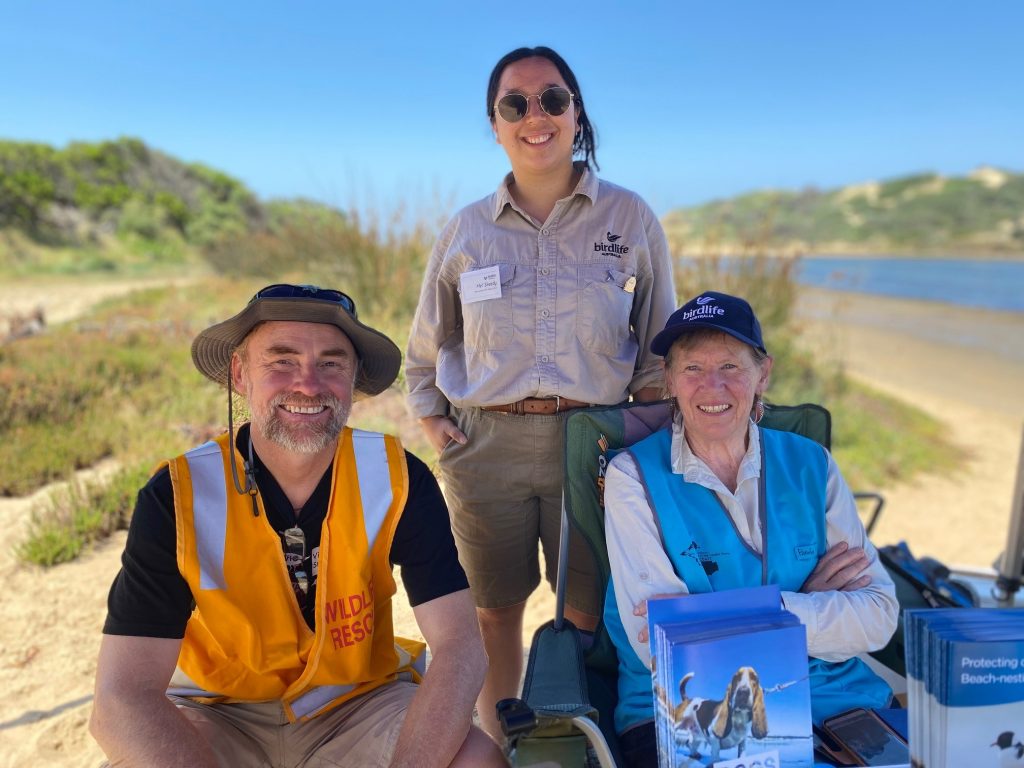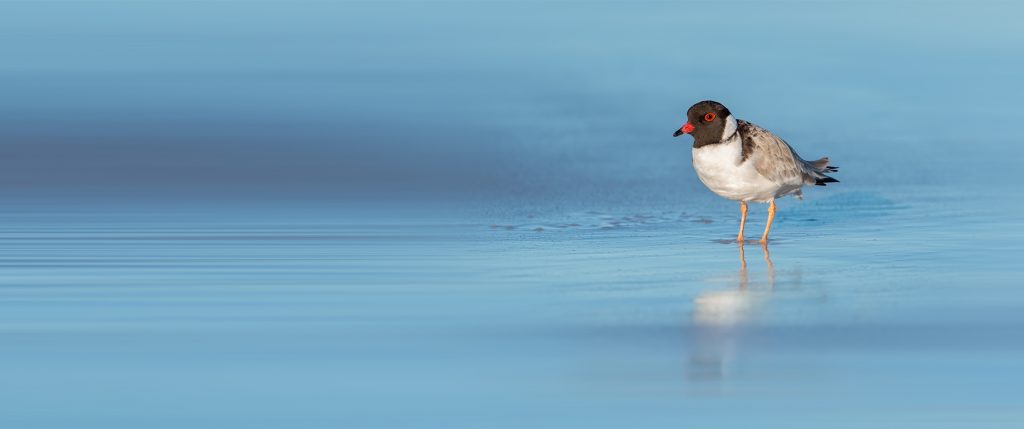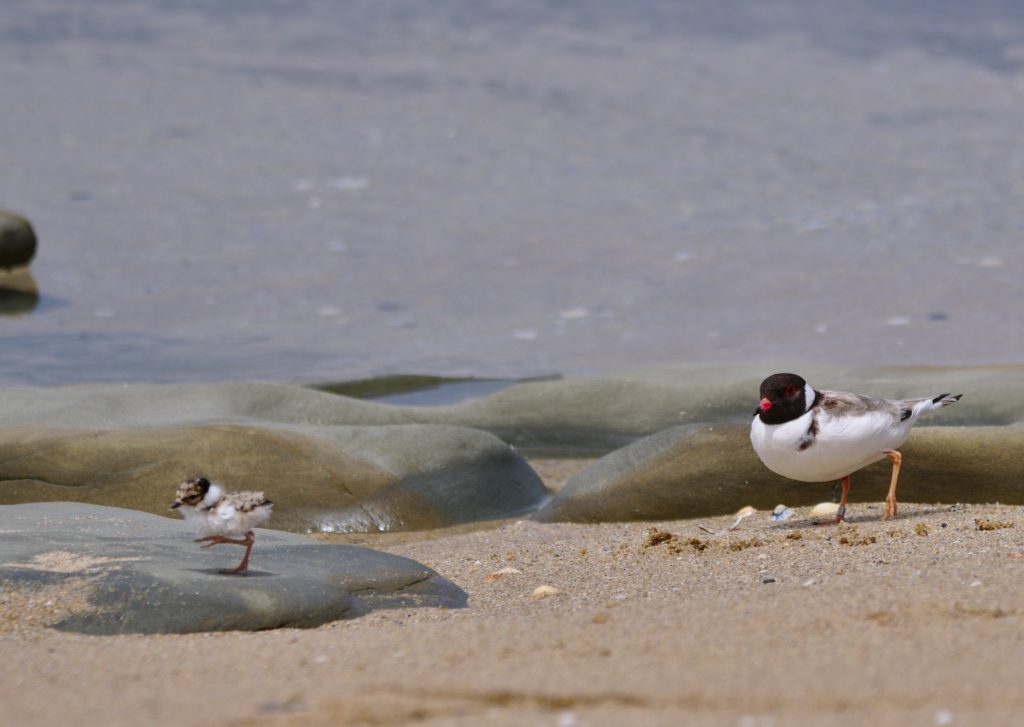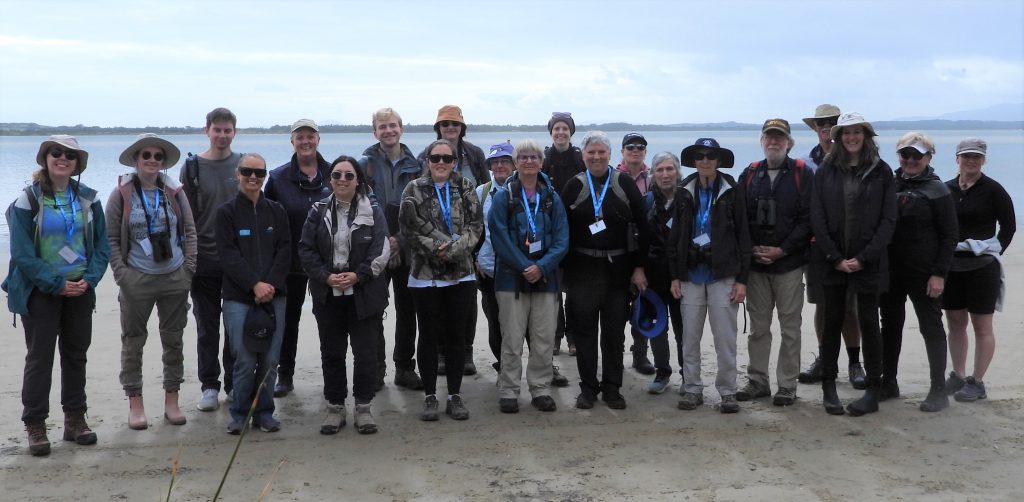A look at one commercial farming business and its response to flood and its larger approach to land management.
About the podcast
Gippslandscapes is an occasional podcast, highlighting the many people doing great things caring for the environment and improving the landscapes of our region. Whether they are farmers, “townies” involved in Landcare, or just someone with a passion to make the region a better place.
Each episode will feature one person or group and they are available wherever you get your podcasts. All episodes are archived on Zen-cast and Apple Podcasts.
If you’d like to provide feedback to the Gippslandscapes team you can drop them an email at here or post a review on iTunes.
The Great Pelican Count with Deb Sullivan
A look at the work to protect this amazing bird.
About the podcast
Gippslandscapes is an occasional podcast, highlighting the many people doing great things caring for the environment and improving the landscapes of our region. Whether they are farmers, “townies” involved in Landcare, or just someone with a passion to make the region a better place.
Each episode will feature one person or group and they are available wherever you get your podcasts. All episodes are archived on Zen-cast and Apple Podcasts.
If you’d like to provide feedback to the Gippslandscapes team you can drop them an email at here or post a review on iTunes.
A look at how one Landcare group has evolved, changed and prospered over 20+ years.
About the podcast
Gippslandscapes is an occasional podcast, highlighting the many people doing great things caring for the environment and improving the landscapes of our region. Whether they are farmers, “townies” involved in Landcare, or just someone with a passion to make the region a better place.
Each episode will feature one person or group and they are available wherever you get your podcasts. All episodes are archived on Zen-cast and Apple Podcasts.
If you’d like to provide feedback to the Gippslandscapes team you can drop them an email at here or post a review on iTunes.
A look at how modern dairy farmers are managing the various roles they fill all with one eye on the next drought event.
About the podcast
Gippslandscapes is an occasional podcast, highlighting the many people doing great things caring for the environment and improving the landscapes of our region. Whether they are farmers, “townies” involved in Landcare, or just someone with a passion to make the region a better place.
Each episode will feature one person or group and they are available wherever you get your podcasts. All episodes are archived on Zen-cast and Apple Podcasts.
If you’d like to provide feedback to the Gippslandscapes team you can drop them an email at here or post a review on iTunes.
2023 Victorian Landcare Grants now open for West Gippsland
The Victorian Government has opened the latest round of the Victorian Landcare Grants, with $3.95 million funding available to Landcare and environmental volunteer groups and networks across the state for on-ground works, education, and capacity building projects that protect, enhance, and restore our land and natural environment.
Grants of up to $20,000 are available for on-ground projects and support grants of up to $500 are available to help with group administration and running costs.
The grants are open to environmental volunteer groups, including Landcare groups and networks, Friends groups, Conservation Management Networks, Committees of Management, Coastcare groups and Aboriginal groups to support the important work they do in protecting and restoring our land and environment.
This funding will be delivered through Victoria’s ten Catchment Management Authorities (CMAs), demonstrating the important environmental outcomes that can be achieved through collaboration between CMAs, environmental groups, local communities, and the government.
“West Gippsland has a total allocation of $375,250 to distribute to enable inspiring projects across the region,” said CEO of the West Gippsland CMA, Martin Fuller.
“In 2022, West Gippsland Landcare groups received funding for 19 projects and 28 support grants for initiatives such as restoring waterways, planting of wildlife corridors, creating homes for koalas, blitzing weeds and much more,” said Mr Fuller.
“The time given and continued dedication to the environment of these groups is inspiring – and I’m really looking forward to see what projects will come out of the 2023 grant process.”
The Victorian Landcare Grants support the implementation of Protecting Victoria’s Environment – Biodiversity 2037, the Victorian Government’s long-term plan to protect our environment, and Victorians Volunteering for Nature – Environmental Volunteering Plan.
This week, Gerard speaks with Peter Jacobs and Jillian Stanton about the issue of feral deer.
About the podcast
Gippslandscapes is an occasional podcast, highlighting the many people doing great things caring for the environment and improving the landscapes of our region. Whether they are farmers, “townies” involved in Landcare, or just someone with a passion to make the region a better place.
Each episode will feature one person or group and they are available wherever you get your podcasts. All episodes are archived on Zen-cast and Apple Podcasts.
If you’d like to provide feedback to the Gippslandscapes team you can drop them an email at here or post a review on iTunes.
Professor Richard Eckard from the University of Melbourne School of Agriculture and Food Systems walks us through the current pressure points and what Australian farmers can expect in the coming years.
About the podcast
Gippslandscapes is an occasional podcast, highlighting the many people doing great things caring for the environment and improving the landscapes of our region. Whether they are farmers, “townies” involved in Landcare, or just someone with a passion to make the region a better place.
Each episode will feature one person or group and they are available wherever you get your podcasts. All episodes are archived on Zen-cast and Apple Podcasts.
If you’d like to provide feedback to the Gippslandscapes team you can drop them an email at here or post a review on iTunes.
It’s a tough gig being a beach nesting bird – especially for the vulnerable Hooded Plovers (affectionately known as hoodies) that nest along South Gippsland’s shores. Life for these tiny birds is perilous as they constantly protect both themselves and their chicks from disturbance, weather and predators. Luckily, there’s a lot of plover love going around…
West Gippsland Catchment Management Authority, BirdLife Australia, Friends of the Hooded Plover, Parks Victoria along with Bass Coast and South Gippsland Landcare Networks have joined forces to deliver a coordinated program of actions to protect the hoodies including:
- Fox control
- Nest monitoring
- Community education.
“This team effort is part of the Powlett River/Kugerungmome Partnerships project where all partners are playing their part in protecting and raising awareness of these threatened birds,” says Paula Camenzuli, NRM Strategic Planner.
Hooded Plovers depend on coastal habitats including beaches, rocky headlands, sandy dunes and estuaries like Kugerungmome (Powlett River) to survive. These are not to be confused with the noisy Masked Lapwings (or Spur-winged Plovers) found commonly in urban areas. Hoodies are smaller and more delicate with a distinctive black ‘hood’, white collar on their throat and a red bill with a black tip.
One key action of the program is controlling foxes which are a major predator of the birds. The program is showing good results to date and targeted control measures will continue along the coast from San Remo to Walkerville to give the plovers the best chance of survival.
Another essential part of the project is regular monitoring of the birds. BirdLife Australia and Friends of the Hooded Plovers volunteers undertook extensive training before the hoodie breeding season to be able to record and observe their behaviour and contribute to the ongoing understanding of their life. Volunteers walk the beaches regularly to observe and record the nesting birds and their chicks and note any changes such as tide damage or nest disturbance.
More recently, volunteers at Powlett River/Kugerungmome were also trained to note any signs of fox activity as part of their bird monitoring. This information helps the fox crew to identify locations to lay soft jaw fox traps and is contributing to the overall success of the fox control program at the river mouth.
Hoodies breed between September to March/April and lay their eggs directly on the sand in a shallow nest scrape on the beach above the high tide mark, or among dunes. This is also the busiest season for people along the coast, so they must share their breeding sites with thousands of beach goers – and their dogs which are a major threat to the birds if off the lead.
We can all play our part in helping the hoodies to breed and survive so project partners took to beaches to spread the word. They set up pop up stalls at beaches across Bass Coast and South Gippsland Shires at locations such as Kugerungmome/Powlett River and Cape Paterson to meet beach goers and engage with them as they took a walk.
The stalls offered expert advice along with useful information such as how to identify the hoodies and how we can share our beaches by simply reading and observing beach signage as you enter an area. All dogs also were given a free lead and treat so they can play their role in doing the right thing for wildlife.
Our coast is a stronghold for Hooded Plovers
The coastline between San Remo and Inverloch is home to the second largest population of Hooded Plovers in Victoria. The beaches provide important breeding, roosting and foraging sites.
The beach between Kilcunda Cemetery and Williamsons and along to the mouth of the Kugerungmome/Powlett River is home to at least seven breeding pairs. The area is also used in the non breeding winter months – with flocks of up to 20 birds having been recorded at the river mouth.
Further east, the coast between Point Smythe (Venus Bay) and Waratah Bay provides important and relatively secluded habitat for Hooded Plovers and other beach-nesting birds to breed and roost all year round.
Hooded Plovers
With around 3,000 individuals remaining in south-eastern Australia, Hooded Plovers are listed as vulnerable in Victoria under the Flora and Fauna Guarantee Act1988 and federally on the Environment Protection and Biodiversity Conservation Act 1999. They are also considered as a vulnerable species at the global scale, according to the IUCN Red List of Threatened Species 2022.
A kitchen table chat with wool growers Rosemary and Fergus.
About the podcast
Gippslandscapes is an occasional podcast, highlighting the many people doing great things caring for the environment and improving the landscapes of our region. Whether they are farmers, “townies” involved in Landcare, or just someone with a passion to make the region a better place.
Each episode will feature one person or group and they are available wherever you get your podcasts. All episodes are archived on Zen-cast and Apple Podcasts.
If you’d like to provide feedback to the Gippslandscapes team you can drop them an email at here or post a review on iTunes.
It was fun and merriment at Merriman Creek when over 75 enthusiastic river lovers joined the Meet the Merriman event, hosted by West Gippsland Catchment Management Authority (WGCMA) recently.
“It was a great turnout with more people than we expected coming along because they were interested in the estuary,” said WGCMA Coastal Waterways Officer Callum Edwards.
“We held the event so that the community can have a greater appreciation of what lives in Merriman Creek estuary and learn how the estuary changes over the year and why it is so special. We also wanted to learn from the community about what they enjoy most about Merriman Creek estuary and how they like to use it,” said Callum.
It was a fun morning of discovery with everyone learning just what lies below the surface in the estuary and the wealth of life there.
The enthusiastic crowd enjoyed discovering waterbugs and insects with John and Olivia from Bug Blitz Trust, and Jackson from Austral Research and Consulting also caught fish in nets to show participants what fish live in the estuary and further upstream.
“But the highlight was everyone having fun and learning more about Merriman Creek estuary and what lives in it, especially since they spend so much time down at the creek!” Callum said.
Estuaries (where rivers meet the sea) are an important link between the ocean and land. A meeting place where fresh water from rivers and streams mixes with salty marine waters. Estuaries are dependent on both water fresh and salt water sources to maintain a healthy environment.
Merriman Creek flows east from the Strzelecki Hills and out to sea on the edge of the township of Seaspray. The estuary also has high cultural significance for the Gunaikurnai. Merriman Creek estuary is listed as a priority waterway in the current Regional Water Strategy and in the Regional Catchment Strategy.
